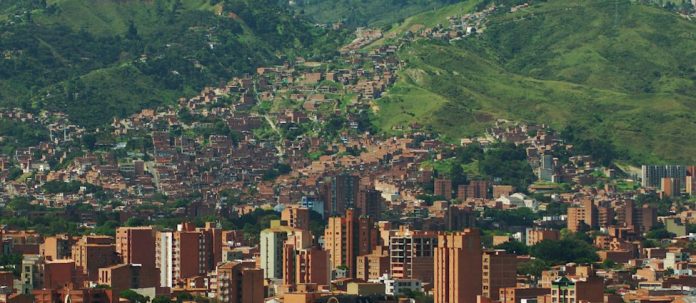The City of Medellin, Colombia has been implementing smart city initiatives over the last several years. The Medellin Smart City Program consolidates ICT adoption processes, content generation, design of services, and support for public connectivity strategies with the aim of improving the relationship between citizens, their environment, and the municipal administration.
In 2010, the municipality of Medellin began studying the need to implement a mobility system (SIMM), which integrates information technologies, communication, transportation infrastructure, and the different types of vehicles. This system seeks to manage all of these components efficiently to improve mobility in the city by optimizing the use of the roads, improving security, reducing commuting times, pollution, and fuel consumption, as well as disseminating information to users so that they can make better decisions related to their travel.
This smart mobility system seeks to employ technological solutions to lessen mobility constraints. Under this initiative, Medellin has installed 40 electronic traffic infraction detection cameras that can rotate in up to 70 fixed control points. These cameras detect infractions such as speeding, red light running, forbidden lane circulation, and driving in the pedestrian walkway.
The system reads 1 million circulating plates daily, using the information to study mobility, set rules, and evaluate drivers’ knowledge. Through the implementation of this system, the city has reduced infractions by more than 80% in the monitored sites.
At the moment, Medellin has 80 visualization cameras with video analytics, operated by the Transit Control Center (TCC), that allow visual monitoring of the road network, for the purpose of detecting incidents that affect traffic. Some of these cameras are used for automatic incident detection through smart software that identifies situations such as a detained vehicle, a slow-moving vehicle in fluid traffic, and congestion.
Medellin’s CCTV system allows the operators in the control center to make informed and timely decisions to respond to accidents in the least possible time, as well as inform drivers in real time of any incident by communicating via the variable messaging panel (VMP) system.
Subscribe now to get the daily newsletter from RCR Wireless News
Medellin has also implemented a smart traffic lights network, which has over 600 traffic light intersections interconnected by a wireless and fiber optic broadband communications network, owned by the city, which enables it to take action in real time on any traffic situations that may occur and to make immediate decisions to achieve greater mobility on the urban perimeter.
Additionally, the city has installed sensors that measure traffic variables in real time. These sensors continuously measure travel times, road occupation, and traffic volumes to monitor and improve mobility across the urban areas.
The city’s smart city project also includes a fleet management initiative. Under this initiative, public transportation companies must guarantee that the cars in their fleet are equipped with the technological devices necessary to allow real-time collection and transmission of the data required to monitor the quality, efficiency, and security indicators of the service, in accordance with the Transportation and Transit Secretariat’s regulations.
The city has also installed a video surveillance system with over 800 cameras distributed throughout Medellin. Each camera covers a 120-meter radius. Forty percent of them are placed in high-crime areas.
The Aburra Valley metropolitan area noise monitoring network manages, analyzes, and publishes the data generated by the eight monitoring stations that measure the noise levels in five municipalities under its jurisdiction. The network has seven fixed environmental noise monitoring stations and one mobile station located throughout the Aburra Valley.

